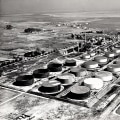Do you ever ponder how oil and gas companies in Orange County, CA adjust to the ever-changing demand for their products? The answer lies in the choices consumers make, the policies that reward decisions, and the exploration of new sources of oil and gas. Consumer preferences can shift over time due to new technology that offers better alternatives, such as reducing costs and emissions. For instance, California Governor Gavin Newsom is pushing for a “price increase” sanction in the State Legislature that would, in effect, tax “excessive profits” at gasoline refineries. When demand is high, there is more investment in new projects (such as the construction of new LNG terminals) and in the exploration of new sources of oil and gas.
However, mechanisms such as carbon border adjustments could create tensions with major oil and gas trading partners, such as Canada. Using a global assessment of the future competitiveness of the various oil and gas production fields in the global market in four different decarbonization scenarios, this report quantifies the potential significant reduction in U. S. oil and gas demand.
UU. and the effects on oil and gas production at the country level, while considering the possible effect of the adoption of electric vehicles on a large scale. Incentives should include public and private initiatives and partnerships to encourage the re-employment of local workers who were directly or indirectly dependent on the oil and gas sector. The Energy Information Administration noted a reduction in capacity due to the maintenance of oil pipelines in West Texas, which reduced natural gas flows to the west.
Based on these scenarios, it is not unlikely that gas-rich states will fare better overall despite the decline in overall global demand. While understandable, these transition efforts will eventually need to similarly support workers in the oil and gas industry, both in terms of funding levels and the scope of specific transition programs. In particular, US oil is the “cleanest” on average in the world, although not the cheapest; US gas, on the contrary, is the cheapest but not the “cleanest”, and it remains the cheapest in the world even after incorporating a supposed global carbon tax. Policies that promote more aggressive emission reductions for U. oil and gas production could also try to displace products with higher emissions from other major production regions, thus minimizing the climate impact of global oil and gas use in a future with low emissions. Natural gas by pipeline requires continuous political and market stability to ensure continuous and secure supply along a sensitive linear infrastructure.
Even if aggressive global action is taken against climate change, global oil and gas industries may not completely disappear by 2050, as current fields of operation will be inadequate to meet future global demand. In just one year we have seen changes in demand for oil and gas as COVID-19 subsided, geopolitical tensions tested resource-rich countries, and prices soared. It is clear that long-term transformation of energy systems around the world will continue.



